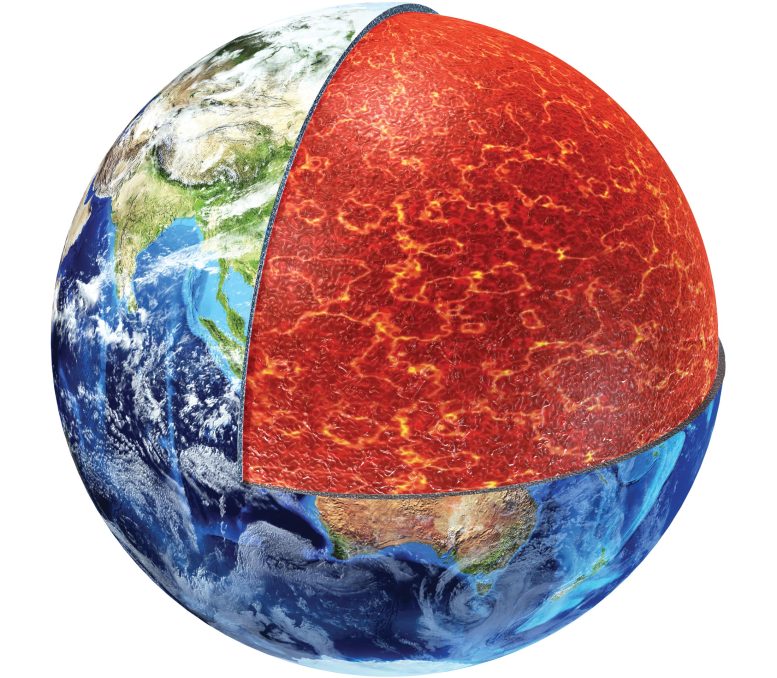
A new study has revealed a global layer of partly molten rock beneath the Earth’s crust, challenging assumptions about the role of molten material in tectonic plate motion.
Scientists have discovered a new layer of partly molten rock under the Earth’s crust that might help settle a long-standing debate about how tectonic plates move.
Researchers had previously identified patches of melt at a similar depth. But a new study led by The University of Texas at Austin revealed for the first time the layer’s global extent and its part in plate tectonics.
The research was published today (February 6, 2023) in the journal Nature Geoscience.
The molten layer is located about 100 miles from the surface and is part of the asthenosphere, which sits under the Earth’s tectonic plates in the upper mantle. The asthenosphere is important for plate tectonics because it forms a relatively soft boundary that lets tectonic plates move through the mantle.
The reasons why it is soft, however, are not well understood. Scientists previously thought that molten rocks might be a factor. But this study shows that melt, in fact, does not appear to notably influence the flow of mantle rocks.

“When we think about something melting, we intuitively think that the melt must play a big role in the material’s viscosity,” said Junlin Hua, a postdoctoral fellow at UT’s Jackson School of Geosciences who led the research. “But what we found is that even where the melt fraction is quite high, its effect on mantle flow is very minor.”
Heat and Convection Drive Tectonic Motion
According to the research, which Hua began as a graduate student at Brown University, the convection of heat and rock in the mantle are the prevailing influence on the motion of the plates. Although the Earth’s interior is largely solid, over long periods of time, rocks can shift and flow like honey.
Showing that the melt layer has no influence on plate tectonics means one less tricky variable for computer models of the Earth, said coauthor Thorsten Becker, a professor at the Jackson School.
“We can’t rule out that locally melt doesn’t matter,” said Becker, who designs geodynamic models of the Earth at the Jackson School’s University of Texas Institute for Geophysics. “But I think it drives us to see these observations of melt as a marker of what’s going on in the Earth, and not necessarily an active contribution to anything.”
Global Seismic Insights into the Asthenosphere
The idea to look for a new layer in Earth’s interior came to Hua while studying seismic images of the mantle beneath Turkey during his doctoral research.
Intrigued by signs of partly molten rock under the crust, Hua compiled similar images from other seismic stations until he had a global map of the asthenosphere. What he and others had taken to be an anomaly was in fact commonplace around the world, appearing on seismic readings wherever the asthenosphere was hottest.
The next surprise came when he compared his melt map with seismic measurements of tectonic movement and found no correlation, despite the molten layer encompassing almost half the Earth.
“This work is important because understanding the properties of the asthenosphere and the origins of why it’s weak is fundamental to understanding plate tectonics,” said coauthor Karen Fischer, a seismologist and professor at Brown University who was Hua’s Ph.D. advisor when he began the research.
Reference: “Asthenospheric low-velocity zone consistent with globally prevalent partial melting” by Junlin Hua, Karen M. Fischer, Thorsten W. Becker, Esteban Gazel and Greg Hirth, 6 February 2023, Nature Geoscience.
DOI: 10.1038/s41561-022-01116-9
The research was funded by the U.S. National Science Foundation. Collaborating institutions included the UT Oden Institute for Computational Engineering and Sciences and Cornell University.
Never miss a breakthrough: Join the SciTechDaily newsletter.
1 Comment
Wait, if the rock is molten is it really ground braking?!?